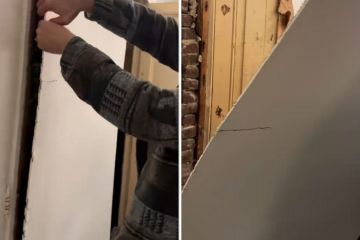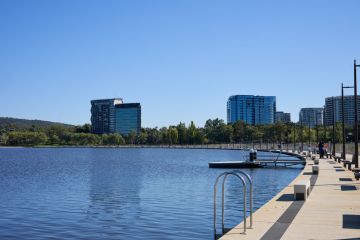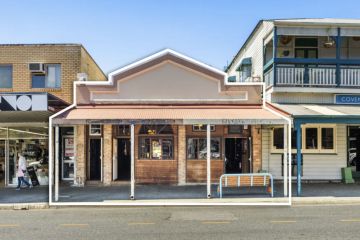Do your sums carefully to find the best mortgage
We all have unique aims and tastes but first-time investors can position themselves so equity in an existing property can help them to buy a house later.
Affordability should always be a key issue for aspiring first-home buyers but there are ways of making it happen.
It might mean doing your research to get the lowest interest rate, making sacrifices you hadn’t originally planned, or buying a smaller investment property before the dream home in which you were hoping to live.
”If people’s living arrangements are such that they can stay at home or have low-cost accommodation, buying an investment property where there is the income coming in to supplement the mortgage payments can make it more affordable,” the chief executive of Resi Mortgage Corporation, Lisa Montgomery, says.
”It also gets a foot in the door and the ability to build up equity to then buy a home to live in.”
The potential is there for you to still be able to claim the government’s first-home buyer grant on the second property, because that is the one you are going to live in.
But before you take that first step, you need to run the numbers, the managing director of Smartline Personal Mortgage Advisers, Chris Acret warns.
First off, lenders will provide about 90 per cent of the cost of an investment property – which means you need to stump up 10 per cent of the total outlay, or, preferably, 20 per cent if you want to avoid paying lenders’ mortgage insurance.
If you plan on using the equity in your existing home, you’ll need to obtain a bank valuation, which Acret says ”is typically quite conservative” and will be co-ordinated by your lender as part of the loan application and assessment process.
Montgomery says the most important factors in selecting a loan are to find a competitive interest rate, look for low or no ongoing fees associated with the loan, have the flexibility to move from interest only to principal and interest or a variable to fixed rate and features such as a redraw facility.
One of the important things to remember when buying property is that the costs don’t stop at the purchase price. There are other expenses you may come across, including government fees and stamp duty, mortgage protection insurance, legal fees, inspection fees and moving costs.
How to pick right type of loan
Fixed or variable? It’s the ongoing dilemma for mortgage holders.
Right now, competition in the home loan market, a newly widened range of variable-loan special offers and extended cash rate stability mean there are more borrowers opting for variable-rate loans than fixed-rate loans, according to Mortgage Choice.
You will most likely pay a premium to lock in a minimum repayment level by fixing your borrowing rate.
The best variable interest rate is 6.79 per cent from State Custodians Mortgage Company, according to InfoChoice (see page 10 for the best mortgage rates). The best three-year fixed rate (the most popular fixed term) is 7.15 per cent from Heritage Building Society.
Fixed-rate home loans tend to be less flexible with features and borrowers can incur large exit fees upon breaking the fixed term, a spokeswoman for Mortgage Choice, Kristy Sheppard, says.
On the other hand, these loans offer borrowers peace of mind about the repayments required throughout the term.
Variable-rate home loans usually offer more flexible features and, of course, if there is the potential for the RBA to cut rates, which means your repayments would fall as well.
”When deciding between fixed and variable rates, a borrower must ask themselves questions such as: ‘How will I feel if I fix and interest rates fall?’, ‘Can I afford repayments if interest rates rise and I’m on a variable rate?’, ‘How much do I value a guaranteed steady repayment level?’ and ‘If I fix, am I likely to need to break the fixed-rate term?” she says.
Of course, there is always the option of hedging your bets and fixing part of the home loan amount, while leaving the remainder at a variable rate.
Should you only pay interest?
Once you have had a loan approved, the next thing to do is to tailor it to your needs. Consider interest rates, fees, features, accessibility and the service provided by the lender. You also need to think whether you want to be reducing the amount you owe through a ”principal and interest” loan, or whether you want to only pay the interest.
For a principal and interest loan, at the start of a loan the repayments usually go to meeting the interest. But as the outstanding loan is reduced, more of your repayment goes to reducing the mortgage balance.
Interest-only home loans are not structured to reduce the loan amount. They are popular with property investors, as the smaller repayments allow you to, for example, make greater contributions to your primary place of residence, while allowing the investment property to grow in value through capital gains. The repayments are interest only and the principal isn’t paid until the term expires.
”Many borrowers choose to go with interest-only initially as it allows them more breathing room and by the time their interest-only period has ended they are likely to be bringing in a higher wage and more rental income,” Sheppard says.
Paramedics double up
DANNI McSWEENEY and Carl Sartori (pictured) didn’t plan to have two properties. The Melbourne paramedics were looking to move from their unit to a bigger house when they learnt the benefits of using the equity in one property to buy another and keeping the unit as an investment property.
“Having an investment property wasn’t something that we were focused on – it just happened,” Danni says.
“It was only when we started talking with our Smartline adviser, Sharon Lee, about buying a new house that we even started thinking that this might be an option for us. In researching it further with both Sharon and our accountant, we could see that we could actually make it work.”
Within a year, the couple had bought a 1950s weatherboard house a few blocks from the unit. While it needs some work, they were able to purchase it for less than they had budgeted. The couple were able to have both properties as a result of a strong focus on paying as much as possible off the first home loan and a healthy increase in their property’s value.
Danni says they went for a variable-rate loan so they could make extra repayments, often double the amount when that was possible. “It meant a third of the home loan was paid off in the time the property had increased in value by about 30 per cent,” Danni says.
The loan on the first property is now interest-only and with tenants paying a healthy rental, the unit is almost neutrally geared, meaning Danni only has to pay a small amount each week to fund the difference.
Their goal now is to keep both properties, while focusing on renovating and improving their new house in the coming years.
“It was a bit of a surprise that we could do it – we’re both on pretty normal wages and this wasn’t something we had actually planned,” she says.
”However, we’ve been able to make it happen and now I can see this is a great way for us to save for our retirement.”
We recommend
We thought you might like
States
Capital Cities
Capital Cities - Rentals
Popular Areas
Allhomes
More
- © 2025, CoStar Group Inc.







